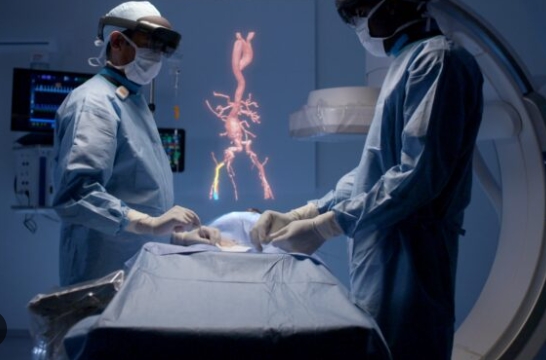The Future of Healthcare: How Mixed Reality is Revolutionizing Patient Care
Mixed reality, also known as MR, is the integration of virtual reality (VR) and augmented reality (AR) technologies to create immersive experiences in which physical and digital objects coexist and interact in real time.
Improving Medical Training
Mixed reality has the potential to revolutionize medical training by providing students with realistic simulations and hands-on experience in a safe and controlled environment.
Enhancing Surgical Procedures
Surgeons can use mixed reality to overlay patient data, such as CT scans and MRI images, directly onto the patient’s body during surgery, allowing for more precise and efficient procedures.
Improving Patient Education
Patients can use mixed reality to better understand their medical conditions, treatment options, and procedures, leading to increased engagement and better outcomes.
Remote Consultations
With mixed reality, healthcare providers can conduct remote consultations with patients in different locations, providing timely and efficient care without the need for physical travel.
Personalized Treatment Plans
Mixed reality technology can be used to create personalized treatment plans based on a patient’s unique medical history, preferences, and needs, leading to more effective and efficient care.
Overall, mixed reality has the potential to revolutionize patient care by improving medical training, enhancing surgical procedures, improving patient education, enabling remote consultations, and creating personalized treatment plans. The future of healthcare is here, and mixed reality is leading the way towards a more efficient, effective, and patient-centered approach to healthcare.

